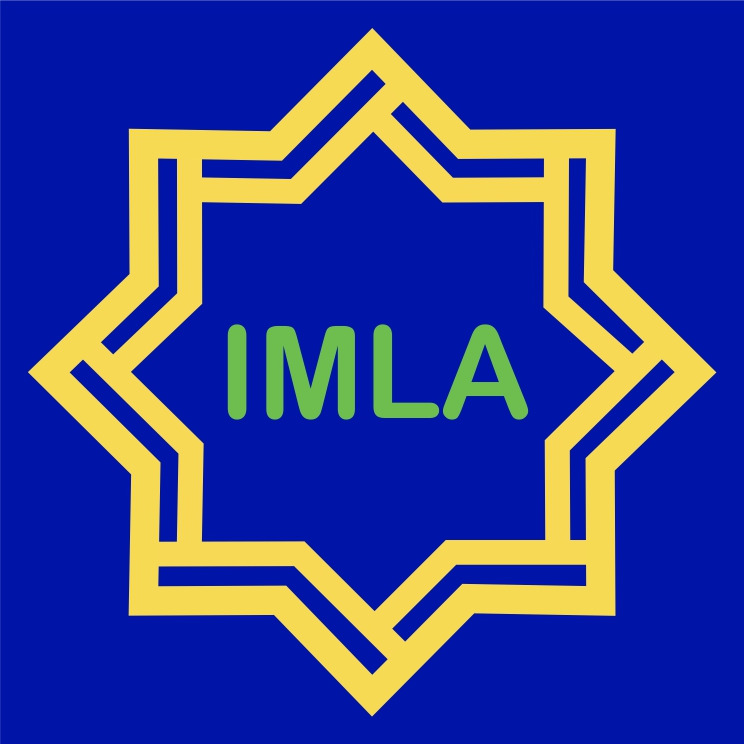Structural Analysis of the Novel Dima'un fi Qasr al-Chamra by Ehab Farouk Hosny: Important Cultural Stories in the History of Islamic Civilization in Spain
DOI:
https://doi.org/10.29240/jba.v7i1.5997Keywords:
Alhambra, Granada, structural analysisAbstract
This research aims to conduct a structural analysis of the novel Dima'un Fi Qasr al-Chamra by Ehab Farouk Hosny. This novel raises an important cultural story in the history of Islamic civilization in Spain. It tells the story of a beautiful woman from Egypt, named Sarah, an archaeologist who researches Islamic heritage buildings both in her own country and in other countries. It tells the history of Andalusia, now Spain, starting from discovering a map buried in one of the rooms in Sultan Hasan's mosque in Cairo. The map was a secret document of the Alhambra belonging to the great scientist Al Zahrawi (Albucasis), containing a chemical composition to treat cancer. This paper has two main objectives: the practical and theoretical objectives. The realistic goal is to reveal the intrinsic and coherent elements and the interrelationship between one part and another. Meanwhile, the academic goal is to discover a secret document belonging to el-Zahrawi, a scientist, containing a cancer drug's composition. To remind readers that the discovery of personal papers, in any case, should not be announced in public because it can be dangerous and will cause various problems in obtaining certain benefits and goals. The theory used is a structural theory, which focuses on literary works viewed as a unified and integrated structure. The technical method is the structural method, which works structurally by revealing and describing the intrinsic elements in "Dima'un Fi Qashril-Chamra" by Ehab Farouk Hosny and connecting the mutual relationships between the parts. This technique uses formalism representing literary works such as character, plot, motif, theme, and language. The method used in this research is library research. Library study is a technique of collecting data and information by examining written sources such as scientific journals, reference books, literature, etc., related to this discussion. Based on its nature, this research is classified as qualitative research using descriptive analysis techniques.
Downloads
References
’Abdurrazzak, B. ’Abdul-B. (1991). An-Naqdul-Adabiyyah.Wizaratut Ta’līmil-ali. Al-Mamlakatul-‘Arabiyyahtus-Su’udiyyah.
’Inan, M. A. (1997a). Al-Atsar Al-Andalusiyah Al-Baqiyah fi Isbaniya wa Burtugal. Al Madani Muassassah As Su’ūdiyyah bi Misr.
’Inan, M. A. (1997b). Daulah Islamiyah fi Andalus, 4th edition. Al Madani Muassassah As Su’ūdiyyah bi Misr.
Al-Zahrawi, A. al-Q. K. (2020). Albucasis on surgery and instruments. University of California Press, Berkeley.
Aminudin. 2014. Introduction to Literary Appreciation.. Bandung: Sinar Baru Algensindo.
Faruk, HT. (2012). Literary Research Methods. Yogyakarta : Pustaka Pelajar
Hosny, E. F. (2010). Blood In The Alhambra Palace `the Story Of The Most Important Document In The History Of The Arabs In Spain`. Arab House Bookshop.
Hosny, E. F. (2022). الØكم النهائي ÙÙŠ قضية نجيب Ù…ØÙوظ نهاية الشهر الجاريالسبت 04 مارس. Ehabhosny.Blogspot.Com. http://ehabhosny.blogspot.com/
Irwin, R. (2004). The Alhambra (Vol. 2). Harvard University Press.
Junus, U. (1990). Feminist theory and the Third World, Masyarakat Indonesia 1990 Vol.17 No.1 pp.19-31. Universiti Malaya, Kuala Lumpur, Malaysia.
Kasmawati, dkk (2023). Literary Theory. Sumatera Barat: PT Global Eksekutif Teknologi
Landau, R. (2003). The Arab heritage of western civilization. 4th edition. University Press of the Pacific, Honolulu, Hawaii.
Nurgiyantoro, Burhan. (2004). Fictional Study Theory. Yogyakarta : Gadjah Mada. University Press
__________. (2013). Fictional Study Theory. Yogyakarta : Gadjah Mada. University Press
Pradopo, dkk. (2010). Several Literary Theories, Methods of Criticism, and Their Applications. Yogyakarta : Gajah Mada University Press
Provencal, L. (1994). Al-Hadarah Al-‘Arabiyah fi Isbaniya, translated by Tohir Akhmad Makky from the original title The Arab Civilization in Spain. Darul-Ma’arif.
Sangidu. (2007). Literary Research: Approaches, Theories, Methods, Techniques, and Tips. West Asian Literature Publishing Section, Faculty of Cultural Sciences, Gadjah Mada University.
_____. (2009). Lailatul Gaba ’Anhal-Qama.Karya Najib Al-Kilani: Analysis Structural Model Syadzilī Farhūd Wa Asdiqa’uhu. Education Attaché of the Indonesian Embassy in Cairo.
Sangidu, Awla A. I. (2022). Literary Research: Approaches, Theories, Methods, Techniques And Tips. Idea Press Publisher, Yogyakarta.
Muhammad, al-Suwaidan Thariq Muhammad. (2005). Alandalus At Tarikh Al Musawwir. Riyadh: Mathabi’ Al Majmu’ah Ad Dauliyah.
Teeuw, A. (2017). Sastra dan ilmu sastra: Pengantar teori sastra, Cetakan keenam. Dunia Pustaka Jaya, Bandung, 2017.
Downloads
Published
How to Cite
Issue
Section
Citation Check
License
Authors who publish with Arabiyatuna: Jurnal Bahasa Arab agree to the following terms:- Authors retain copyright and grant the journal right of first publication with the work simultaneously licensed under a Creative Commons Attribution-NonCommercial-ShareAlike 4.0 International License (CC BY-NC-SA 4.0) that allows others to share the work with an acknowledgment of the work's authorship and initial publication in this journal.
- Authors are able to enter into separate, additional contractual arrangements for the non-exclusive distribution of the journal's published version of the work (e.g., post it to an institutional repository or publish it in a book), with an acknowledgment of its initial publication in this journal.
- Authors are permitted and encouraged to post their work online (e.g., in institutional repositories or on their website) prior to and during the submission process, as it can lead to productive exchanges, as well as earlier and greater citation of published work (See The Effect of Open Access).














 This work is licensed under a
This work is licensed under a 